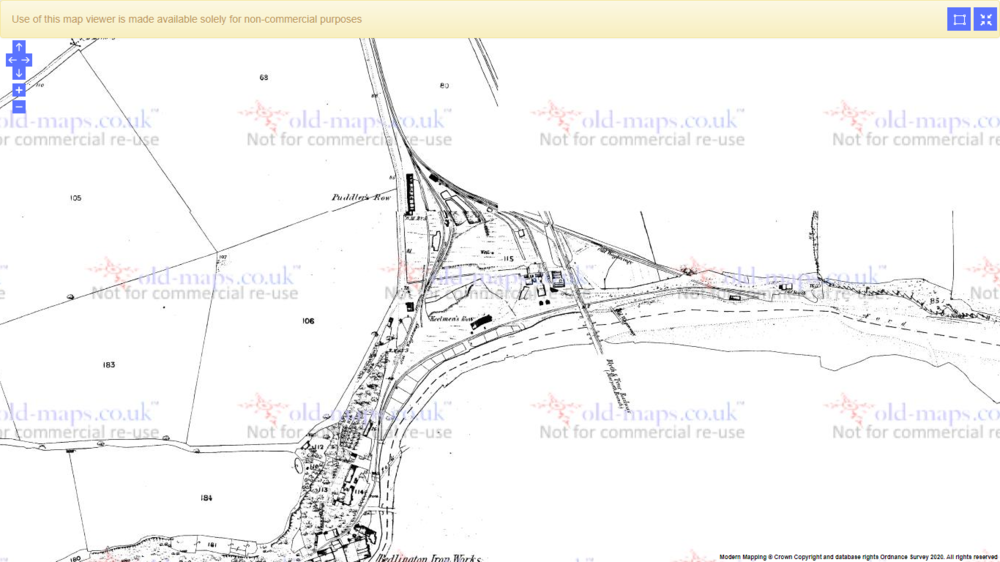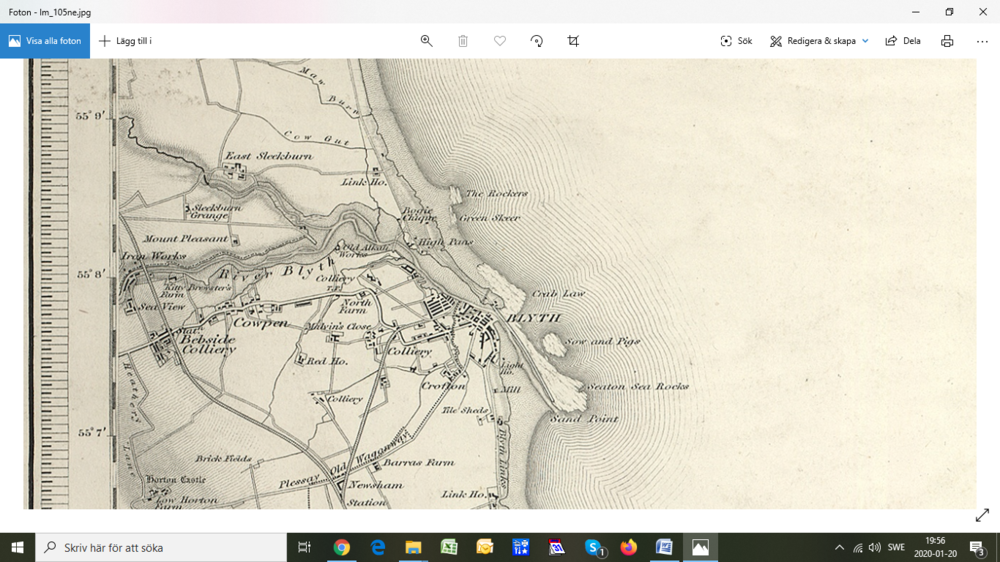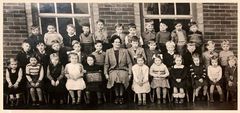.jpg.cdd7f8371d17e2f2f2e2a0e21e02f727.jpg)
Canny lass
Supporting Members-
Posts
3,597 -
Joined
-
Last visited
-
Days Won
407
Content Type
Forums
Gallery
Events
Shop
News
Audio Archive
Timeline
Everything posted by Canny lass
-
.thumb.jpg.7493ddab4a696108cf2b849323d3c155.jpg)
Nedderton Primary school c1965.jpg
Canny lass commented on Alan Edgar (Eggy1948)'s gallery image in Historic Bedlington
-
.thumb.jpg.7493ddab4a696108cf2b849323d3c155.jpg)
Nedderton Primary school c1965.jpg
Canny lass commented on Alan Edgar (Eggy1948)'s gallery image in Historic Bedlington
Having a bit of difficulty getting my head around the details in that photo! I recognise a relative, already named, but his age and the date on the photo don't quite match up. Also having difficulties with the building. Had the infant school at NETHERTON closed and had the pupils transferred to NEDDERTON? Netherton was an infant school but Nedderton was a Junior school.in my time. I'll have to do a bit of digging. It could well be the rear of the building which faces the road in Nedderton village but I think the window panes were upright, same as the front of the building. Of course, they could have fitted new windows. Can't imagine where they fitted in 72 pupils!! -
Good to see our adults inviting them in to take part.
-
.thumb.jpg.7493ddab4a696108cf2b849323d3c155.jpg)
Councillor Robinson - January 2020
Canny lass replied to Malcolm Robinson's topic in Talk of the Town
Crazy, isn't it! Here, every child who has more than 2 km to school (and that's most of them) is entitled to use a free school bus which saves the problem of parking at schools. Some of the more recently built schools have solved the parking problem with a D-shaped island in front of the school. Parking is ON the island with only one entrance/exit (on the curved side) while the school entrance is accessed on foot from the straight side where there is no traffic other than school buses. It has some remarkable side-effects. 1. It doesn't half slow the traffic down outside the school. 2. The kids are allowed to charge for parking when they are putting on any kind of event in the school, giving a welcome boost to school funds. A very large comprehensive is in the process of being built locally and I understand that the pick-up/drop-off point is going to be an underground drive-through. -
What a pity I couldn't reply earlier! Could have saved you a bob or two. Plenty of soup spoons on Amazon at better prices. However, a good tip is to have a look in charity shops. They get so much cutlery and china from house clearances that they don't know what to do with it all. A couple of years ago I needed cutlery and china for a 3 course meal for 80 people. Hiring was out of the question (far too expensive). I managed to buy everything I needed, even the serving dishes, for under a tenner at the nearest charity shop. Then I gave it all back after we'd done with it. Might be worth a try if you're looking for anything else.
-
That would be the Nicholas Garrow Home for the Blind. Anybody know anything about Nicholas Garrow?
-
Every little helps, Bedlingtonian! Thanks for the info.
-
.thumb.jpg.7493ddab4a696108cf2b849323d3c155.jpg)
Staith Quay, Bank Top, Bedlington Station
Canny lass replied to Peter Turner's topic in History Hollow
Here's another version of the 1859 map from Old-Maps.co.uk OS County series Northumberland 1859 -1883. There's a bit more detail and you can see quite clearly that after leaving the railway sidings at the old Puddlers Row the main line continues only a short distance before branching off into new sidings which end at the larger of the buildings you mention. My guess would be railway worksheds or industrial buildings ' possibly Bedlington Ironworks. -
.thumb.jpg.7493ddab4a696108cf2b849323d3c155.jpg)
Staith Quay, Bank Top, Bedlington Station
Canny lass replied to Peter Turner's topic in History Hollow
Bedlington Iron Works occupied the land on the Bedlington side of the river as far east as Kitty Brewster. I don't see any buildings on the OS maps prior to 1930 but I did find a map from 1859 which shows a couple of the Iron Works buildings. One of them, nearest the bridge could be the one in the picture. VisionofBritain.org.uk You'll need to zoom in to see it but it is there. -
.thumb.jpg.7493ddab4a696108cf2b849323d3c155.jpg)
Staith Quay, Bank Top, Bedlington Station
Canny lass replied to Peter Turner's topic in History Hollow
Is there a date for this photo? -
I knew I'¨d heard this name before! Mr Weekes is mentioned in connection with Lairds House on the 'Discover Bedlington Leaflet which somebody kindly posted on Bedders for me a couple of years ago. I've searched but I can't find it. I have it saved as a pdf file and I'll try to post it here. I don't know if that's possible but here goes: Bedlington CA Leaflet p.2.pdf Seems to have worked!
-
There were two Mr Weekes - father and son. Mr Weekes senior was the mine owner's agent and his son took over the role after his father. Perhaps the photo is of one and the bust of the other? https://books.google.se/books?id=spDHDwAAQBAJ&pg=PA9&lpg=PA9&dq=Weekes+bedlington&source=bl&ots=u5i540i3rM&sig=ACfU3U1SGIq1EdAGcRRhHmdC-dEZ3mUvtA&hl=sv&sa=X&ved=2ahUKEwjJxa3G_4znAhUAysQBHasSDgsQ6AEwA3oECAkQAQ#v=onepage&q=Weekes bedlington&f=false Captured Memories 1900 -1918 Across the Threshhold of War by Peter Liddle Mr Weekes gets a mention on page 9, but do read the whole of chapter 2 on Tom Easton (pages 7-12), A Northumberland Pit Boy. It gives some interesting insights.
-
Reminds me of the beadle in Dickens' Oliver Twist!
-
Thanks Eggy! It was one of Maggie's earlier posts that got me thinking about this. I planned to research it then but, as you know, other things got in the way and there hasn't been either time or opportunity do anything about it. However, we are now back to eight wheels and two drivers so I thought I might start now. Language development is a fantastic mirror of history, så it's worth looking at it from the linguistic aspect. While holly and holy are very similar in spelling and, to an extent, sound today, this has not always been the case so the development of both national language and dialect need to be looked at. It'll probably take a couple of months, depending on how far back I can go. I'll keep you informed. Meanwhile, I'm still looking for an earlier, proven, use of the place name Hollymount if anybody can help.
-
I'm researching the possibility that Hollymount may be a derivation of Holy Mount - it's an interesting theory. Does anybody know the earliest record of 'Hollymount' as a place name in Bedlington - on a map or document, for instance. 1860 is the earliest I've found to date.
-
Bedlington's 'yards' are fascinating places! All sorts of life were encapsulated in them! 1860's map is interesting for @Stuart because the 'Smithy' is also noted on the map.
-
.thumb.jpg.7493ddab4a696108cf2b849323d3c155.jpg)
1950c Julie Dobson.jpg
Canny lass commented on Alan Edgar (Eggy1948)'s gallery image in Historic Bedlington
-
Sorry, Stuart, I didn't manage to get any text with the map - from 1860. You'll find Wilsons Yard on the south side of Front Street West just behind Bedlington Hall.
-
.thumb.jpg.7493ddab4a696108cf2b849323d3c155.jpg)
1950c Julie Dobson.jpg
Canny lass commented on Alan Edgar (Eggy1948)'s gallery image in Historic Bedlington
-
Vic, this is the strangest autumn and winter I've experienced! We had our first snow in mid September! That's early even by Scandinavian standards. It didn't stay more than a day however and, with the exception of a 3 inch fall in December, it's been more like spring ever since. Haven't had the shovel out once. My arm muscles are wasting away. I've had to change my favourite whisky glass for one that's less heavy.
-
In that case I'll let yu off - but just this once!
-
Ahem ... Neither did mine! You're just trying to baffle me with science, aren't you young man. A birthday comes only once a year - fact. This year has an extra day - fact. Therefore 366 days, my birthday being on the 366th day from the day that neither you or I counted. I've had the steam-driven calculator cranked up so there's no arguing with it!
-
Thank you kind sirs! Missed my usual roll in the snow this year as there isn't a flake to be seen anywhere round here. Mind you, I didn't miss the shovelling snow which was a cause of great joy. Spent a quiet(ish) day planning a holiday in the sun before hubby starts being weaned off all his medications. Thanks again!
-
Ahem... 366 days surely. Leap year and all that ...







